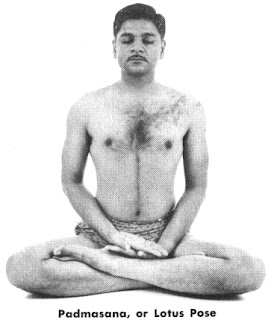"Restraint, observance, posture, regulation of breath,
abstraction of the sense, concentration, meditation,
and trance are the eight accessories of yoga."
Patanjali's Yoga Sutra
There are 8 stages, also considered 8 separate disciplines to yoga as presented by Patanjali which must be practiced and refined in order to perceive the true self- the ultimate goal of Yoga:
- Yama - Universal ethics: Non-violence, truthfulness, non-stealing, sexual restraint and non-acquisitiveness.
- Niyama - Principles of self conduct: purity, contentment, intense dedication or austerity, study of self and scriptures and self-surrender.
- Asana - practice of the postures.
- Pranayama - Breath control.
- Pratyahara - withdrawal and control of the senses.
- Dharana - concentration.
- Dhyana - meditation.
- Samadhi - a state of higher consciousness where the sense of self (ego) dissolves in the object of meditation and the individual self exists in its own pure nature.
Let's explore each of these eight limbs in more detail:
1.) The first limb of Patanjali's system is that of Yamas, or the ethics of yoga. Yoga stresses non-violence, non-deceit (truthfulness), non-stealing, celibacy and an absence of avarice or all bad intent and thoughts.
"The restraints are: abstinence from injury,
veracity, abstinence from theft, continence,
and abstinence from avariciousness."
Patanjali's Yoga Sutra
"Yoga fails by the six-
over-eating, over-exertion, excessive talk,
the observance of unsuitable disciplines,
promiscuous company and unsteadiness.
Yoga succeeds by the six-
zeal, bold determination, courage, true knowledge,
firmness of belief in the words of the Guru
and renunciation of the company of unsuitable people."
Hathayogapradipika
2.) Yoga has five "observances", called Niyama in Sanskrit. These are essentially part of a yogi's dharma, duties that must be performed on the path the spiritual liberation. These are contentment with what one has, practicing tapas (penance), study of the Vedic scriptures, a purity of mind and body, and a surrender to God.
3.) The third limb of Yoga is that of Asana. This refers to both the seated lotus position and any of the other static positions of yoga.
4.) Pranayama is controlling of the breath for the purpose of spiritual liberation. The word is composed of two Sanskrit words, prana, life force, or vital energy, particularly, the breath, and ayama, to extend, draw out, restrain, or control.
"All the breathing practices should be practiced with mind concentrated on them.
The wise man should not allow his mind to wander elsewhere."
Hathayogapradipika
 |
| A very popular yoga guru in India -Ramdev- teaches his followers how to do Pranayama on his TV show. |
5.) Pratyahara is withdrawal of the senses. The objective is to detach oneself from the world and draw into one's own mind. The practitioner should lose all sensation from the five senses.
6.) Dharana is fixing one's attention on a single object.
7.) Dhyana is intense contemplation of the object of meditation.
8.) Samadhi is contemplation and meditation and it used in the Yoga systems as the means to moksha, or liberation


